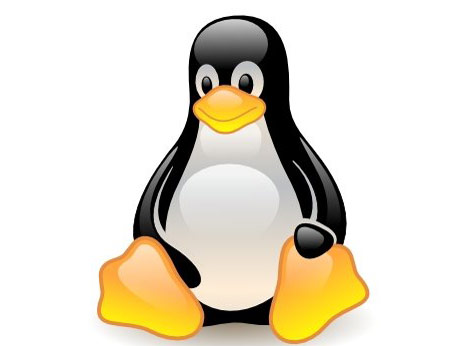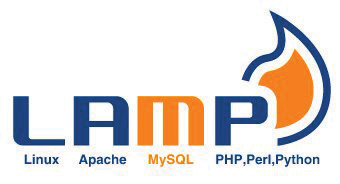49 10.2 Open Source
Learning Objectives
After studying this section you should be able to do the following:
- Define open source software and understand how it differs from conventional offerings.
- Provide examples of open source software and how firms might leverage this technology.
Who would have thought a twenty-one-year-old from Finland could start a revolution that continues to threaten the Microsoft Windows empire? But Linus Torvalds did just that. During a marathon six-month coding session, Torvalds created the first version of Linux (Diamond, 2008) marshalling open source revolutionaries like no one before him. Instead of selling his operating system, Torvalds gave it away. Now morphed and modified into scores of versions by hundreds of programmers, Linux can be found just about everywhere, and most folks credit Linux as being the most significant product in the OSS arsenal. Today Linux powers everything from cell phones to stock exchanges, set top boxes to supercomputers. You’ll find the OS on 30 percent of the servers in corporate America (Lacy, 2006), and supporting most Web servers (including those at Google, Amazon, and Facebook). Linux forms the core of the TiVo operating system, it underpins Google’s Android and Chrome OS offerings, and it has even gone interplanetary. Linux has been used to power the Phoenix Lander and to control the Spirit and Opportunity Mars rovers (Brockmeier, 2004; Barrett, 2008). Yes, Linux is even on Mars!
How Do You Pronounce Linux?
Most English speakers in the know pronounce Linux in a way that rhymes with “cynics.” You can easily search online to hear video and audio clips of Linus (whose name is actually pronounced “Lean-us” in Finish) pronouncing the name of his OS. In deference to Linux, some geeks prefer something that sounds more like “lean-ooks.”1 Just don’t call it “line-ucks,” or the tech-savvy will think you’re an open source n00b! Oh yeah, and while we’re on the topic of operating system pronunciation, the Macintosh operating system OS X is pronounced “oh es ten.”
Andrés Álvarez Iglesias – linux-logo – CC BY 2.0.
Open source software (OSS) is often described as free. While most OSS can be downloaded for free over the Internet, it’s also “free” as in liberated. The source code for OSS products is openly shared. Anyone can look at the source code, change it, and even redistribute it, provided the modified software continues to remain open and free2. This openness is in stark contrast to the practice of conventional software firms, who treat their intellectual property as closely guarded secrets, and who almost never provide the source code for their commercial software products. At times, many software industry execs have been downright hostile toward OSS. The former President of SAP once referred to the open source movement as “socialism,” while Microsoft’s Steve Balmer has called Linux a “cancer” (Fortt, 2007).
But while execs at some firms see OSS as a threat undermining the lifeblood of their economic model, other big-name technology companies are now solidly behind the open source movement. The old notion of open source being fueled on the contributions of loners tooling away for the glory of contributing to better code is now largely inaccurate. The vast majority of people who work on efforts like Linux are now paid to do so by commercially motivated employers (Woods, 2008). Nearly every major hardware firm has paid staff contributing to open source projects, and most firms also work together to fund foundations that set standards and coordinate the release of product revisions and improvements. Such coordination is critical—helping, for example, to ensure that various versions of Linux work alike. Sun Microsystems claims to have eleven thousand engineers contributing to OSS (Preimesberger, 2008). Guido van Rossum, the inventor of the open source Python programming language, works for Google where he continues to coordinate development. IBM programmers work on several open source projects, including Linux. The firm has even deeded a commercially developed programming tool (including an IDE) to the Eclipse foundation, where it’s now embraced and supported by dozens of firms.
Turn on the LAMP—It’s Free!
Open source is big on the Web. In fact, you’ll often hear Web programmers and open source advocates refer to the LAMP stack. LAMP is an acronym that stands for the Linux operating system, the Apache Web server software, the MySQL database, and any of several programming languages that start with the letter “P”—Perl, Python, and PHP. From Facebook to YouTube, you’ll find LAMP software powering many of the sites you visit each day.
Key Takeaways
- OSS is not only available for free, but also makes source code available for review and modification (for the Open Source Initiatives list of the criteria that define an open source software product, see http://opensource.org/docs/osd).
- While open source alternatives are threatening to conventional software firms, some of the largest technology companies now support OSS initiatives and work to coordinate standards, product improvements, and official releases.
- The flagship OSS product is the Linux operating system, now available on all scales of computing devices from cell phones to supercomputers.
- The LAMP stack of open source products is used to power many of the Internet’s most popular Web sites. Linux can be found on 30 percent of corporate servers, supports most Web servers, and is integral to TiVo and Android-based cell phones.
- The majority of persons who work on open source projects are paid by commercially motivated employers.
Questions and Exercises
- Who developed Linux?
- Who develops it today?
- List the components of the LAMP stack. Which commercial products do these components compete with (investigate online, if necessary)?
- Why do commercial firms contribute to open source consortia and foundations?
- Free doesn’t always win. Why might a firm turn down free software in favor of a commercial alternative?
1For examples, see http://mostlylinux.ca/pronounce/torvalds-says-linux.wav and http://suseroot.com/about-suse-linux/how-do-you-pronounce-linux.php.
2A list of criteria defining open source software can be found at the Open Source Initiative at http://opensource.org/osr.
References
Barrett, S., “Linux on Mars,” Science News, Space News, Technology News, June 6, 2008.
Brockmeier, J., “NASA Using Linux,” Unix Review, March 2004.
Diamond, D., “The Good-Hearted Wizard—Linus Torvalds,” Virtual Finland, January 2008.
Fortt, J., “Why Larry Loves Linux (and He’s Not Alone),” Fortune, December 19, 2007.
Lacy, L., “Open Warfare in Open Source,” BusinessWeek, August 21, 2006.
Preimesberger, C., “Sun’s ‘Open’-Door Policy,” eWeek, April 21, 2008.
Woods, D., “The Commercial Bear Hug of Open Source,” Forbes, August 18, 2008.



